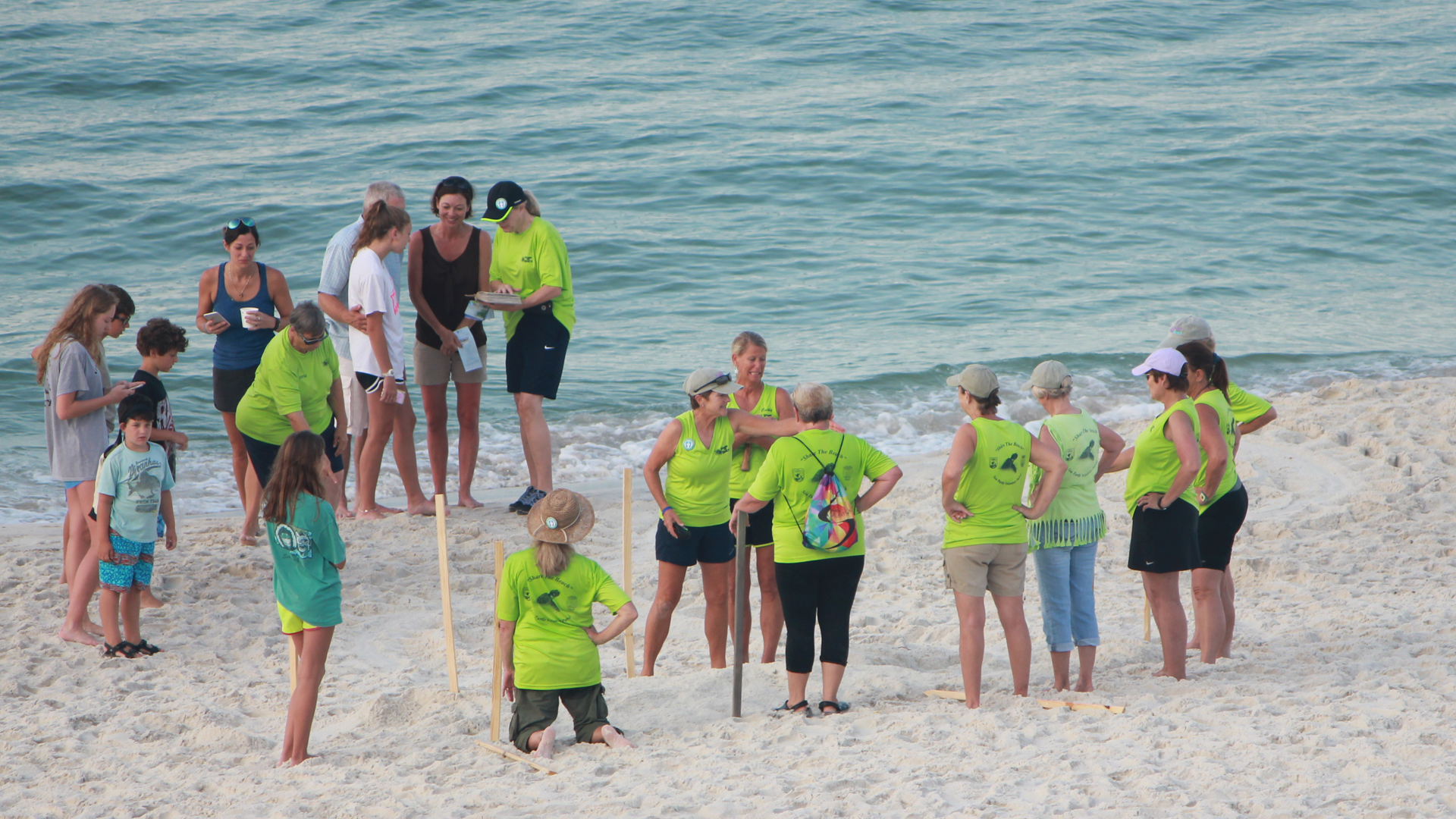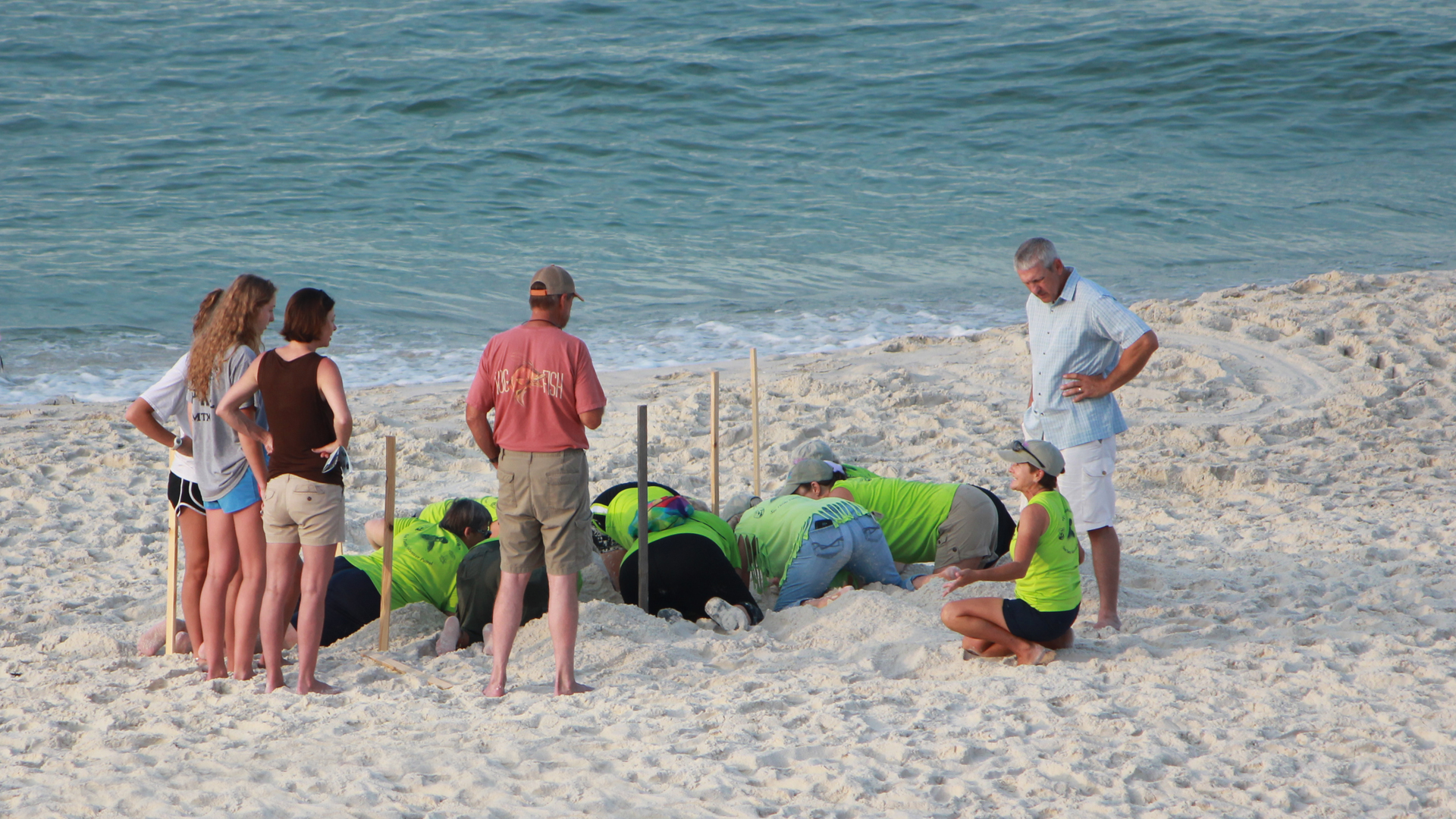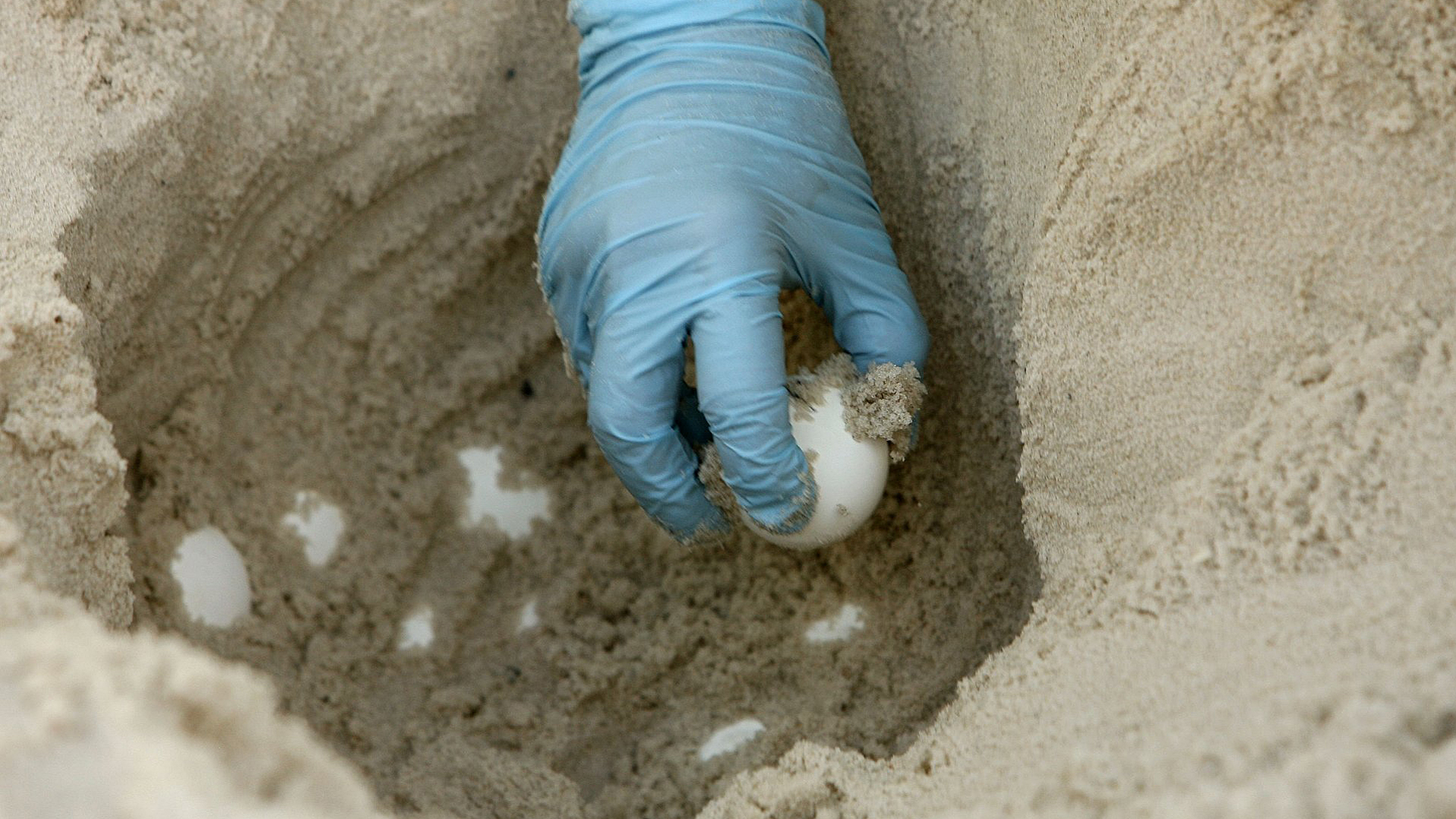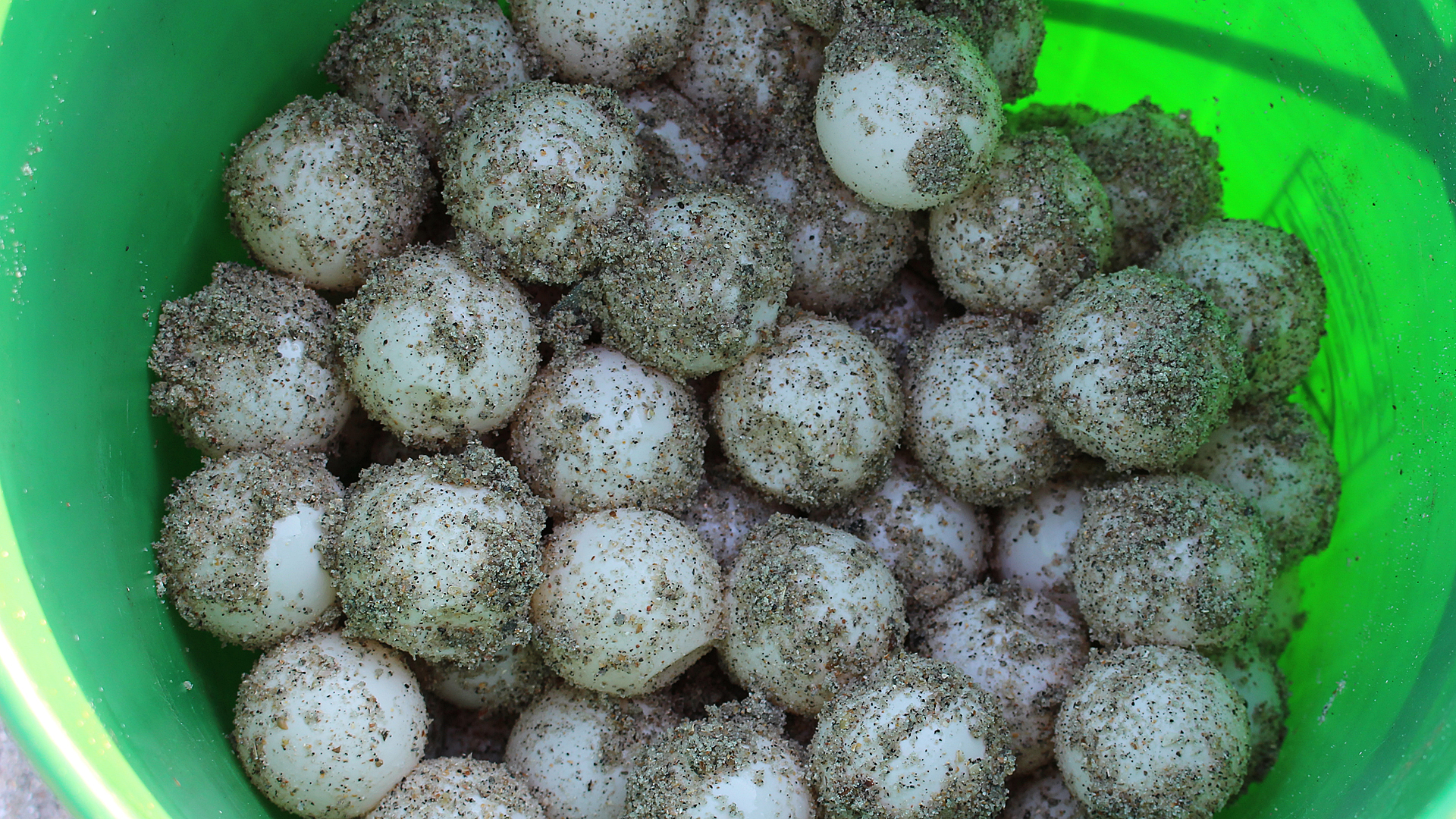



While sea turtle eggs are incubating, they are vulnerable to many dangers.
On occasion, sea turtle nests need to be relocated. This could be because the eggs were laid too close to the water (if turtle eggs get under water while they are incubating, they will not hatch). Also, in areas where many people might walk the nest will need to be moved to keep the eggs from being crushed.
The actual relocation process can vary from state to state but many follow a similar protocol. No one should relocate a nest except trained volunteers from certified turtle organizations.
When a sea turtle nest needs to be relocated, the trained volunteers take great care to create a nest nearly identical to the original. They measure from the surface of the sand down to the top of the eggs. Then they measure the width of the nest. They then remove the eggs one at a time. Some volunteers mark the top of the egg so they do not interfere with the development by placing the eggs in a different orientation. The eggs are placed into a bucket or commercial egg cartons. They identify the eggs in the order they were removed so they can be placed back in the correct order. When the bottom of the nest is reached the depth is measured.
Once all of the relevant nest data is collected, the volunteers will move the eggs to a new location. They will dig a nest that has the same measurements as the first nest. Then carefully replace the eggs into the nest. Eggs will be placed in the exact same order that they were in when removed. Then the nest will be covered with sand. Finally, they will mark the nest with stakes and a sign warning visitors away from the nest.
In approximately sixty days the eggs will begin hatching and the baby turtles will return to the ocean.